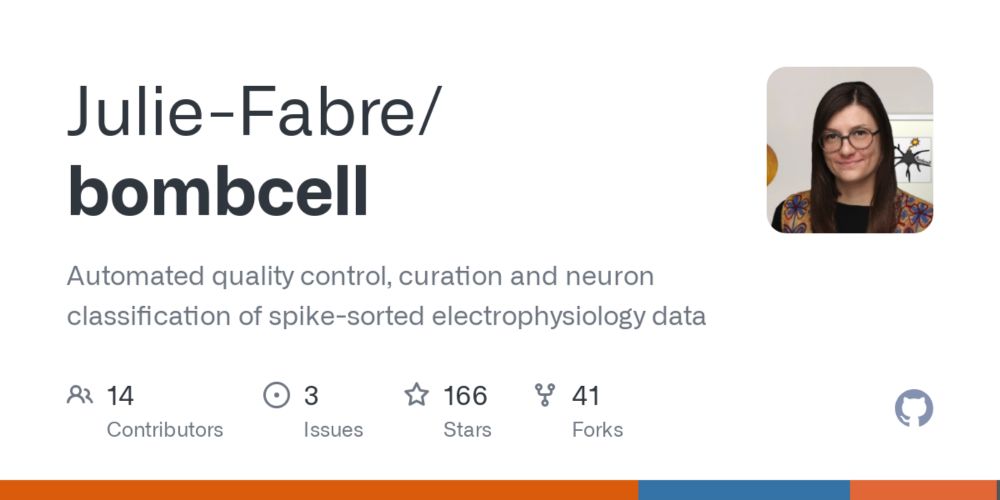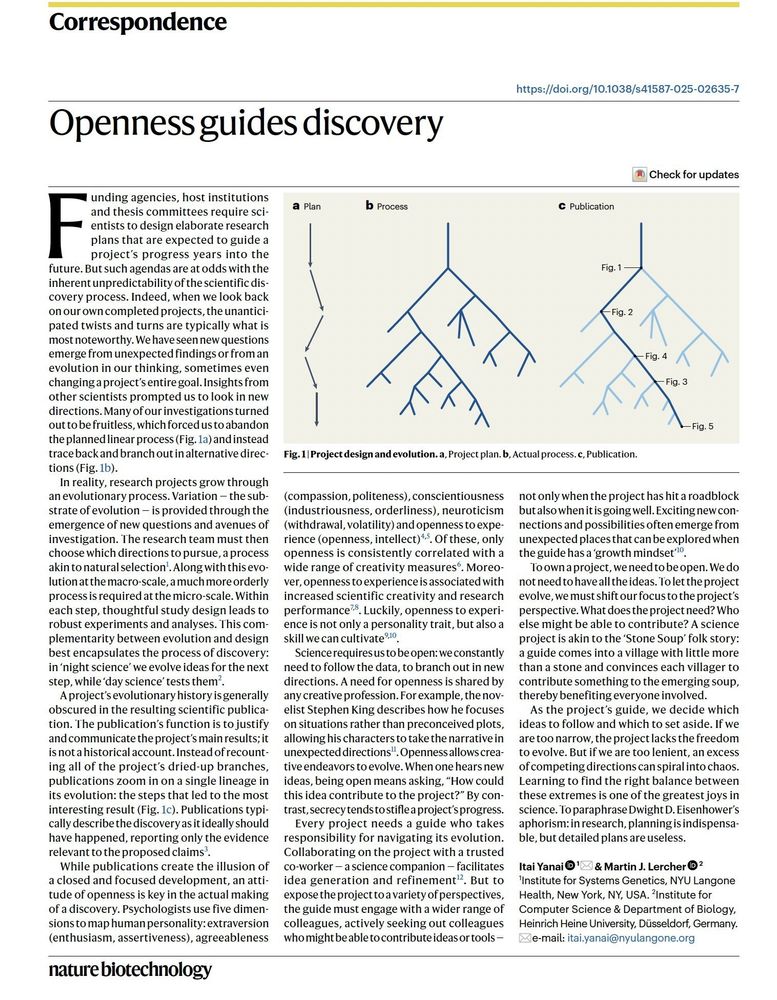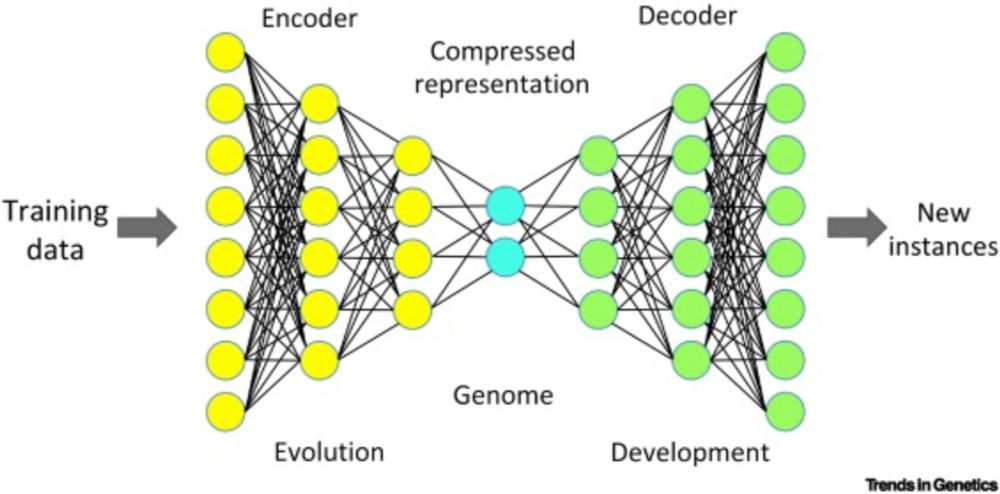This paper has now been published in PRX Life! journals.aps.org/prxlife/abst...
In this work I developed a scaling theory for spiking neural populations using a renormalization group approach -- the 1st, to my knowledge, applied to models of spiking neurons. See the thread for a brief summary.
10.10.2025 19:30 — 👍 2 🔁 1 💬 0 📌 0

Two flagship papers from the International Brain Laboratory, now out in @Nature.com:
🧠 Brain-wide map of neural activity during complex behaviour: doi.org/10.1038/s41586-025-09235-0
🧠 Brain-wide representations of prior information in mouse decision-making: doi.org/10.1038/s41586-025-09226-1 +
03.09.2025 16:22 — 👍 122 🔁 69 💬 2 📌 12
Deeply chilling.
"At some level, AI does seem to separate good things from bad. It just doesn’t seem to have a preference."
21.08.2025 21:50 — 👍 1 🔁 0 💬 0 📌 0
This "Everything, Everywhere, All at Once" simultaneously excites and terrifies me. Further evidence that we need to relegate the 'brain region = specialised function' philosophy to the status of an artefact from the times when we were only able to record from one brain region at a time.
02.08.2025 17:21 — 👍 3 🔁 0 💬 0 📌 0
😂😭
22.07.2025 00:26 — 👍 2 🔁 0 💬 0 📌 0
But, well, there's nothing else I'd rather do. : )
14.07.2025 15:09 — 👍 1 🔁 0 💬 0 📌 0
Sometimes after lab meets (my PI and lab mates have math/physics backgrounds), I call it a success if I managed to recognise all the symbols in the equations; forget understanding them.
14.07.2025 15:05 — 👍 1 🔁 0 💬 2 📌 0
I can't tell you how strongly I empathise with what you feel. I went to med school, and then somehow decided that comp neuro PhD is the logical next step.
14.07.2025 15:05 — 👍 1 🔁 0 💬 1 📌 0

GitHub - Julie-Fabre/bombcell: Automated quality control, curation and neuron classification of spike-sorted electrophysiology data
Automated quality control, curation and neuron classification of spike-sorted electrophysiology data - Julie-Fabre/bombcell
🚀 We are excited to share that bombcell is now available in Python! 🐍 Automatically sort your units into good/MUA/noise/non-somatic using quality metrics and interpretable & adjustable classification thresholds.
pip install and play around with our toy dataset:
🔗 github.com/Julie-Fabre/...
13.06.2025 18:55 — 👍 60 🔁 23 💬 2 📌 2
This podcast was very interesting, but I think I have a dissatisfaction with the concept of representation in neuroscience that goes behind what they discussed in the podcast. I'd be interested to hear thoughts on whether this is interesting, wrong, obvious, etc. 🧵
04.06.2025 23:46 — 👍 61 🔁 8 💬 3 📌 2

Contrary to popular belief, what is important in science is as much its spirit as its product: it is as much the openmindedness, the primacy of criticism, the submission to the unforeseen, however upsetting, as the result, however new that may be. – Francois Jacob
www.nature.com/articles/s41...
07.04.2025 01:07 — 👍 233 🔁 78 💬 1 📌 10
These boxes are not moving. A mind-bending optical illusion by Japanese artist Jagarikin.
07.05.2025 01:03 — 👍 9413 🔁 2366 💬 270 📌 331
4/? The method requires different trials to be of the same sizes though. Time warping is a common way to tackle this, but what do people do if their data has, for example, oscillation locked activity? Trimming does not align the task events, even if it preserves the oscillation structure.
06.05.2025 03:07 — 👍 0 🔁 0 💬 0 📌 0
3/? This paper, from what I understand, can help with this, by giving an interpretable look at the components themselves and not just the reconstructed data. But from what I undertand, TCA also serves a similar purpose. Why isn't it more popularly used?
06.05.2025 03:07 — 👍 1 🔁 1 💬 0 📌 0
2/? Sometimes the interesting aspect of data is not in the component with the highest variance explained (usually motor variability dominates, and cognitive variability, for eg, is in the smaller variance components) and there is no principled way to pick the components interesting for your task.
06.05.2025 03:06 — 👍 0 🔁 0 💬 0 📌 0
1/? It always left me uncomfortable that we smush the time and trial axis of the neuron*time*trial data tensor into one for some analyses. We thought this paper offered an elegant, interpretable (and perhaps more importantly, easy to execute!) way to overcome this.
06.05.2025 03:05 — 👍 0 🔁 0 💬 0 📌 0

Building AI simulations of the human brain
In which Wu Tsai Neuro faculty scholar Dan Yamins explores how foundation models of the human brain could
In a recent podcast @dyamins.bsky.social argues: "We want to be able to use the model of the digital brain as a neurobiomedical discovery and diagnostic design platform." neuroscience.stanford.edu/news/buildin... - That view is popular and I believe that there is a fundamental logical error. Thread
05.05.2025 13:11 — 👍 90 🔁 23 💬 4 📌 3
It's kinda obvious. #AGIComics has already figured out which brain region is the most important. 😇
27.04.2025 20:56 — 👍 25 🔁 5 💬 3 📌 0
Modern Landscape Painter
JimMusil.com
cocktail enthusiast | neuroscientist | SABV influencer | urban gardener | drum learner | she/her
Insta: @doc_becca (fun stuff)
Signal: @doc_becca.87 (secrets)
Neuropsychologist with more curiosity than time. She/her. Co-Author of Subcortical Structures and Cognition. Anti-fascist. Neurodivergent. Cis is not a slur. Feathered Host. Pfp by @jonrosenberg.bsky.social
Principal Researcher @ Microsoft Research.
AI, RL, cog neuro, philosophy.
www.momen-nejad.org
Professor studying origins of concepts @CarnegieMellon; Brain development, cognition, evolution, math & logic; Primate Portal
@TIME 2017 Silence Breakers; she
Science Homecoming
@sciencehomecoming.bsky.social
VP, AI Models @IBMResearch, IBM Director, @MITIBMLab. Former prof and serial/parallel entrepreneur.
A person | neuroscientist | memory wrangler | sex & gender | immigrant 🦘 | slow at marathons and triathlons 🏊♀️🚴🏻♀️🏃🏻♀️| previously @tronsonlab on Twitter/X
Photo credit: Jeff Wilson.
Drosophila enthusiast. Assistant Professor of Mol Bio and Biochem at Rutgers U. Runner. Uses brain to think about brains. All around curious person.
From first-generation college student to Distinguished Professor, studying impulsivity and its relationship to addictions
Posts are my individual opinions and do not reflect my professional roles or responsibilities
Identifying the neural basis of innate social behaviors using molecular and genetic tools @Harvard @HHMINEWS
Professor of Neurosurgery, Baylor College of Medicine
build software and poll for democrats. views mine. Mostly formerly https://twitter.com/johannes_ff
https://letterboxd.com/fischerj/
🏳️🌈🧠🔬🚴♀️ Neuroscientist. Associate Director of Data and Outreach at Allen Institute for Neural Dynamics. Focused on how we do Science in the Open. She/her.
Neuroscientist and curious human. Views are mine alone and re-skeets are not endorsements.
she/her
Associate Professor of Neuroscience at UMN. Circuit enthusiast, organic or silicon(e). Opinions all mine.
Neuroscientist, educator, author of SO YOU WANT TO BE A NEUROSCIENTIST? (Columbia, 2020) & MIND OVER MATTER (Princeton TBD) // professor at ucsd // co-host of www.changetechnically.fyi with @grimalkina // www.ashleyjuavinett.com
Human vision, perception and driving, vision for design. Author of "Demystifying visual awareness" (rdcu.be/b0EWf)
Neuroscience Group Leader at Champalimaud Center for the Unknown in Lisbon, Portugal. Formerly known as @meganinlisbon
Assoc. Prof. Neuroscience at Brown University. Neurogeneticist investigating the neural and molecular mechanisms of cravings. Loves trees🌲 and breaks boards 🥋. Tân’si 👋🏻!
🧬🪰🧠🥃💊🧪 https://www.kaunlab.com/about-5








